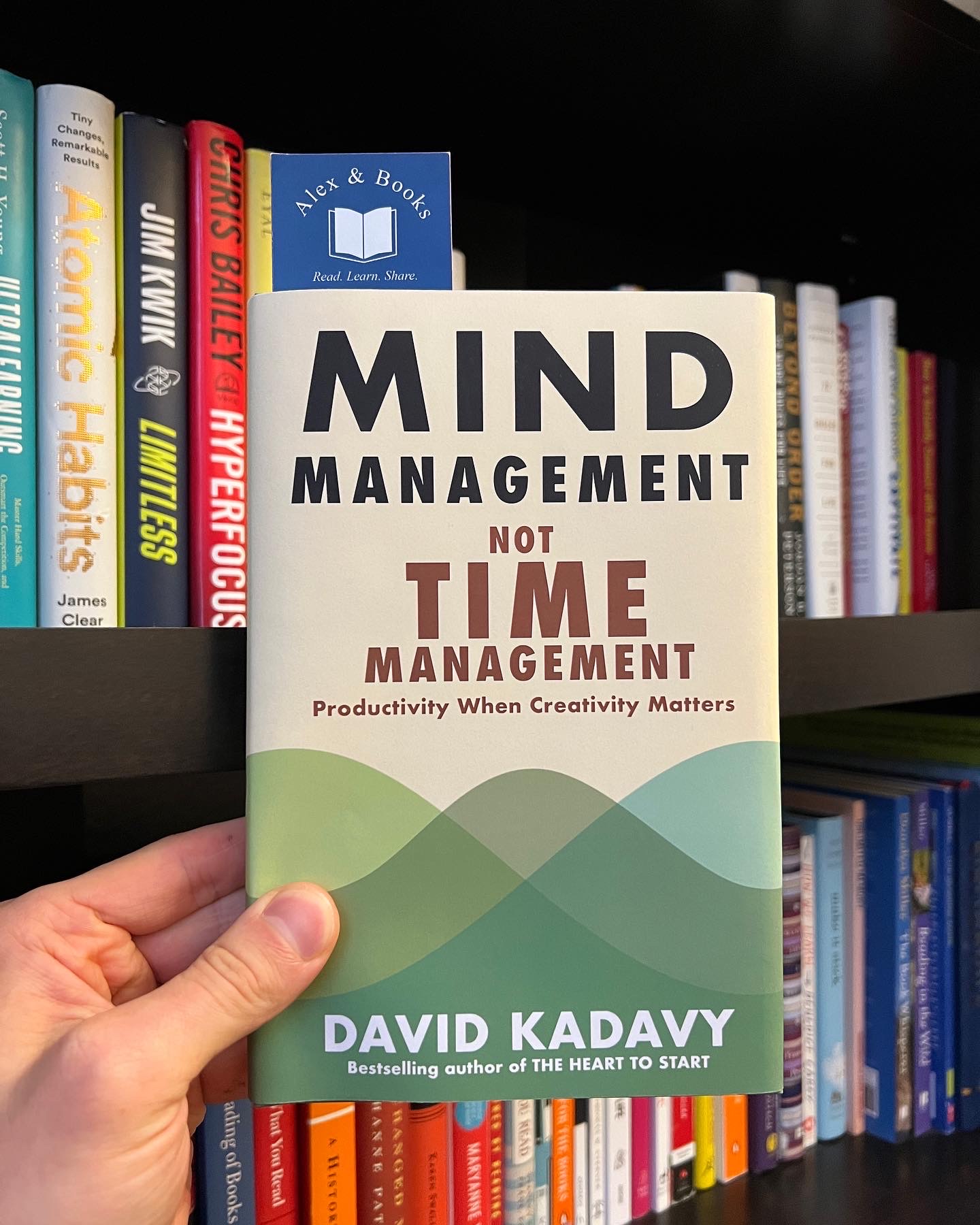Mind Management Not Time Management
David Kadavy, 2020, Mind Management Not Time Management: A Guide to Improving Your Productivity and Happiness
1 Book Image
2 More info
- Mind Management, Not Time Management (epub/mobi ebook)
- Mind Management (Not Time Management)
- How the Seven Mental States of Creative Work guide your art through The Four Stages of Control
- Arrange your time and tasks according to these seven mental states, and you’ll be a creativity machine
- David Kadavy
You have the time. Do you have the energy? Do you have the proper mental approach for the moment?
You’ve done everything you can to save time. Every productivity tip, every “life hack,” every time management technique.
But the more time you save, the less time you have. The more overwhelmed, stressed, exhausted you feel.
“Time management” is squeezing blood from a stone.
3 Three Important Questions
What kind of work do I need to do right now? Is there anything extremely pressing, or can I let my mental state guide the work that I decide to do right now?
What kind of mental state am I in right now? Am I in the mood for draft writing, outlining, researching, exploring, or polishing?
Is there something I can do to get myself into the right mental state? There are different “hacks” or rituals that would help me switch mental states: exercising, massages, different types of music, different types of teas, epsom salt baths, and neurotransmitter-supporting amino acids all eventually served their own purposes.
4 Four tips
Here are a few takeaways and tactics:
4.1 Your brain is plastic
Every time your neurons fire, it makes it easier for those same pathways to fire again. It used to believed that the brain was a static organ once you reached adulthood, but now we know that the brain changes throughout life.
Intertia Law
Each time you perform a thought or action, you make it easier for your brain to reproduce that thought or action.
This has some pretty clear implications for positive vs. negative thoughts, and explains why meditation is so powerful (which I’ll get to in a bit).
4.2 Love your prefrontal cortex
Your prefrontal cortex is the “newest” (in terms of evolution) part of your brain. Your prefrontal cortex is in charge of things like prioritization, planning, and suppressing urges. But, your prefrontal cortex is small, but energy-hungry. So when it gets tired, it’s hard for you to think about the overarching purpose of what it is you’re doing right now, or to keep yourself from checking Facebook and Twitter every 2 minutes.
Rest
It’s important to get mental rest to keep your prefrontal cortex working well, and to set aside special time dedicated only to prioritization.
4.3 Fight your amygdala
Your amygdala is the oldest one of the older (in terms of evolution) parts of your brain. Your amygdala is extremely fear-driven, and is programmed to save you from danger. The really tough part is that your amygdala communicates with your body even before the rest of your brain (which can handle much more complex thinking).
Survivor’s mindset
Your amygdala always wants you take the “safe” route, and will stifle your creativity, so you have to be wary of its power and be aware how she disconects you from your prefrontal cortex.
4.4 Restorative things are productive
Given this struggle between your prefrontal cortex and amygdala, and the fact that your prefrontal cortex is so easily fatigued, it shoustruggle between your prefrontal cortex and amygdala,ld be no surprise that rest is important to using your mind effectively.
If you think you’re getting more work done by working until you collapse every night, I’d argue that you probably aren’t. You’re probably depleting your prefrontal cortex, and instead of thinking strategically, are filling up the time with reactionary, fear-driven (amygdala-driven) “work.”
Feed your soul
Restorative activities, such as exercising, sleeping, and spending time with loved ones help your brain reorganize. If you’re skeptical, there’s research showing that positive mood and sleep encourage insightful thinking, and that close relationships strongly affect happiness.
